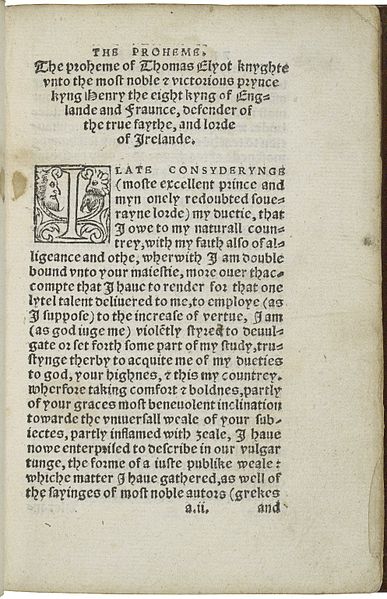The Two Gentlemen of Verona
The Two Gentlemen of Verona is a comedy by William Shakespeare, believed to have been written between 1589 and 1593. It is considered by some to be Shakespeare's first play, and is often seen as showing his first tentative steps in laying out some of the themes and motifs with which he would later deal in more detail; for example, it is the first of his plays in which a heroine dresses as a boy. The play deals with the themes of friendship and infidelity, the conflict between friendship and love, and the foolish behaviour of people in love. The highlight of the play is considered by some to be Launce, the clownish servant of Proteus, and his dog Crab, to whom "the most scene-stealing non-speaking role in the canon" has been attributed.
Two Gentlemen of Verona by Angelica Kauffman (1789)
Silvia by Charles Edward Perugini (1888)
Valentine Rescuing Sylvia from Proteus by William Holman Hunt (1851)
First page of The Boke Named the Governour by Thomas Elyot (1531)
William Shakespeare was an English playwright, poet, and actor. He is widely regarded as the greatest writer in the English language and the world's pre-eminent dramatist. He is often called England's national poet and the "Bard of Avon". His extant works, including collaborations, consist of some 39 plays, 154 sonnets, three long narrative poems, and a few other verses, some of uncertain authorship. His plays have been translated into every major living language and are performed more often than those of any other playwright. Shakespeare remains arguably the most influential writer in the English language, and his works continue to be studied and reinterpreted.
The Chandos portrait, likely Shakespeare, early 17th century
John Shakespeare's house, believed to be Shakespeare's birthplace, in Stratford-upon-Avon
Shakespeare's coat of arms, from the 1602 book The book of coates and creasts. Promptuarium armorum. It features spears as a pun on the family name.
Shakespeare's funerary monument in Stratford-upon-Avon








